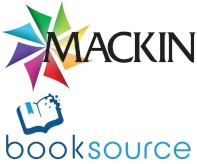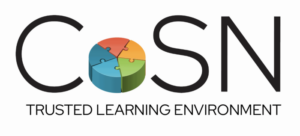BURNSVILLE, MN, October 10, 2024 – Mackin, a leading provider of PK-12 print and digital titles, high-quality maker educational products, and classroom curriculum materials, is pleased to announce it has acquired Booksource, a leading provider of books for classroom libraries and school curriculum.
The two industry leaders reached this agreement after long and careful deliberation. The decision to sell the 50-year-old company to the highly regarded Mackin made sense for the owners of Booksource, as the two companies have built their businesses on a shared philosophy of being a well-respected, single-source solution for the evolving needs of educators and librarians around the world. Together, the two companies have nearly 100 years of combined service in this field.
“Handing the reins of our St. Louis operations to another family-owned business and industry leader like Mackin was an easy decision based on their continuing success and the stellar reputation they have in the education market,” said Neil Jaffe, owner of Booksource. “It’s a win-win-win decision for our customers, our employees and the Jaffe family that we are proud to have made.”
“For many decades, Booksource and Mackin have grown steadily and are widely seen as the most trusted suppliers of educational resources for schools across the map. To carry the torch that Booksource and the Jaffe family have created, is an honor for Mackin and the Heise family as we continue to serve K-12 educators worldwide.”
About Mackin
For 40 years, Mackin has provided library and classroom materials for grades PK-12. Known the world over for exemplary service and a stringent attention to detail, Mackin has access to more than 18,000 publishers and a selection of over 4.2 million print and digital titles. MackinVIA, the free, state-of-the-art digital content management system, offers millions of digital titles including eBooks, audiobooks, read-alongs, databases, and videos. To date, this highly sought-after digital content management system has been awarded 24 distinctive national honors including multiple Best of Show Awards from ISTE, several Awards of Excellence by Tech & Learning, and Product of the Year and multiple Platinum Awards from Modern Library Awards. Today, MackinVIA can be found in thousands of schools and accessed by more than 9 million students around the world. In close partnership with the educational community, Mackin Classroom offers a variety of customization options and unique curriculum solutions for educators to address their specific and evolving needs. The makerspace division, MackinMaker, provides one of the largest selections of maker products for all grade levels. Mackin recently expanded their offerings creating MackinVision, a robust, forward-thinking library management system that goes beyond expectations to include a whole school’s total resources.
Contact your dedicated Account Manager:
Mesa Heise 
Director of Bids & Contracts
800-245-9540
bids@mackin.com
mesa@mackin.com

















